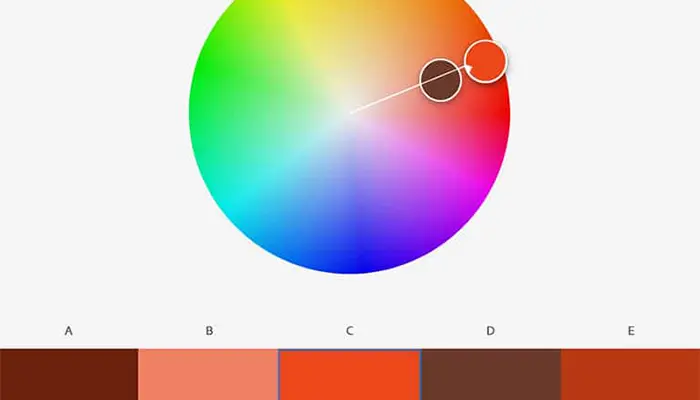Improve User Engagement with HSL Color: Creating a Cohesive Experience - PerfectionGeeks
Creating A Cohesive User Experience Using HSL Colors In CSS
March 28, 2023 10:25 PM
Improve User Engagement with HSL Color: Creating a Cohesive Experience - PerfectionGeeks
March 28, 2023 10:25 PM

My experience is that most colors used in CSS are hex or RGB. Although I have noticed a greater use of HSL colors in CSS, I believe HSL still has much to offer. Therefore, this article will show you how HSL can help us to work with CSS website layouts colors better.
We use hexadecimal color codes (hex colors) most of the time. However, they do have some issues.
They're restrictive.
It's hard to understand them by just reading them.
Changing the color without using a color wheel or picking one yourself is difficult. It's also difficult to determine the hex code's color by looking at it.
Take a look at the following:
I chose a hex color for a sky-blue and a darker color. The hex colors do not relate to one another. It is difficult to see that they are both blue but have different shades.
You might have to create a lighter or darker shade of a particular color to quickly validate or test it. This is not possible with hex colors until you open your color picker.
HSL colors are a great way to solve this problem and open up many possibilities.
HSL stands for hue saturation lightness. Based on the RGB color wheel, HSL is used. Each color is assigned an angle and a percentage for its Saturation and lightness.
Let's look at the example of the sky-blue color we talked about earlier. We first pick the color as we would normally from a colour picker. Next, we get the HSL value.
Notice: While I am using Sketch App, you can use any design tool that you like.
Take a look at the following:
You will notice the HSL values. The angle is the angle that represents the angle of the particular color. It is sky blue in this example. Once we have the angle, you can adjust the Saturation or brightness to suit your needs.
The Saturation of a color is how saturated it should be. 0% is completely unsaturated and 100% is fully saturated.
It controls the color's lightness. For example, 0% is black and 100% is white.
We now have three values to represent color: angle, Saturation and brightness. This is how you can use color in CSS.
.element { background-color: hsl(196, 73%, 62%); } Copy
We can modify the angle of the color to get colors with similar Saturation and lightness. This can be very helpful when creating secondary brand colors.
Can you see how these colors relate to one another regarding Saturation and lightness? This can be achieved by simply changing the angle of the color. This is the beauty of HSL colors. HSL colors are easier to read and modify than any other type of color.

The user experience (UX) is a critical aspect of any website or application. The goal of a UX designer is to create a seamless and cohesive experience for users, which can be achieved through color. HSL (Hue, Saturation, Lightness) is a color system in CSS color methods that can be used to create a cohesive user experience. This essay will discuss how to create a cohesive user experience using HSL colors in CSS.
As I already mentioned, you have many options for specifying color in CSS. So what is the difference between HSL and other CSS colors?
HSL's greatest advantage is its ability to be read. HSL code is easy to read and understand, unlike HEX codes. You can, for example, look at this code and guess its color.
/*hex*/ #00aaff;
Can you guess which color it is? Unfortunately, it is almost impossible to guess the color. It would also be difficult to determine if the result is brighter, darker or completely different if you change even one character of this string.
Machines can read HEX values, but not HSL, which humans can read. HSL allows us to decode the color code and determine if it is saturated, dark, or light.
HSL is intuitively easier to understand than other color models.
Let's take HSL as an example and compare it to RGB. It is easier to imagine an HSL color than an RGB one, because we can specify the hue value.
While it is easy to adjust an HSL color, it can be difficult to adjust RGB colors using a tool such as a color picker. We would need to determine the red, green and blue values to get the desired result.
Take the hover effect example from the previous section. We only had to change one value to make it slightly darker. We would have had problems if we used RGB or HEX colors.
This tutorial will show you how to use HSL in CSS. HSL is different from RGB and HEX colors.
When used correctly, the HSL color model can be a powerful tool. It makes it easier to choose and change colors. You don't even have to be a professional to use it.
Learn how to use HSL, from Website Design Services to CSS. You can also explore the CSS Color Module Level 5 for more CSS color functions.
Strategy
Design
Blockchain Solution
Development
Launching
Testing
Maintenance
Contact US!

Plot 378-379, Udyog Vihar Phase 4 Rd, near nokia building, Electronic City, Phase IV, Sector 19, Gurugram, Haryana 122015
Copyright © 2025 PerfectionGeeks Technologies | All Rights Reserved | Policy
Contact US!

Plot 378-379, Udyog Vihar Phase 4 Rd, near nokia building, Electronic City, Phase IV, Sector 19, Gurugram, Haryana 122015
Copyright © 2025 PerfectionGeeks Technologies | All Rights Reserved | Policy